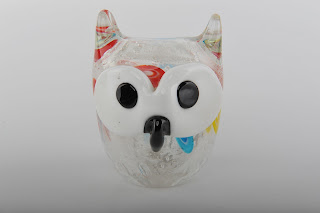Roman blown glass hydria from Baelo Claudia (4th century AD)
The invention of glassblowing coincided with the establishment of the Roman Empire in the 1st century BC, which enhanced the spread and dominance of this new technology. Glassblowing was greatly supported by the Roman government (although Roman citizens could not be "in trade", in particular under the reign of Augustus), and glass was being blown in many areas of the Roman world. On the eastern borders of the Empire, the first large glass workshops were set up by the Phoenicians in the birthplace of glassblowing in contemporary Lebanon and Israel as well as in the neighbouring province of Cyprus.
Ennion for example, was among one of the most prominent glassworkers from Lebanon of the time. He was renowned for producing the multi-paneled mold-blown glass vessels that were complex in their shapes, arrangement and decorative motifs. The complexity of designs of these mold-blown glass vessels illustrated the sophistication of the glassworkers in the eastern regions of the Roman Empire. Mold-blown glass vessels manufactured by the workshops of Ennion and other contemporary glassworkers such as Jason, Nikon, Aristeas, and Meges, constitutes some of the earliest evidence of glassblowing found in the eastern territories.
Eventually, the glassblowing technique reached Egypt and was described in a fragmentary poem printed on papyrus which was dated to 3rd century AD. The Roman hegemony over the Mediterranean areas resulted in the substitution of glassblowing for earlier Hellenistic casting, core-forming and mosaic fusion techniques. The earliest evidence of blowing in Hellenistic work consists of small blown bottles for perfume and oil retrieved from the glass workshops on the Greek island of Samothrace and at Corinth in mainland Greece which were dated to the 1st century AD.
Later, the Phoenician glassworkers exploited their glassblowing techniques and set up their workshops in the western territories of the Roman Empire, first in Italy by the middle of the 1st century AD. Rome, the heartland of the Empire, soon became a major glassblowing center, and more glassblowing workshops were subsequently established in other provinces of Italy, for example Campania, Morgantina and Aquileia. A great variety of blown glass objects, ranging from unguentaria (toiletry containers for perfume) to cameo, from tableware to window glass, were produced.
From there, escaping craftsmen (who had been forbidden to travel) otherwise advanced to the rest of Europe by building their glassblowing workshops in the north of the Alps (which is now Switzerland), and then at sites in northern Europe in present-day France and Belgium.
One of the most prolific glassblowing centers of the Roman period was established in Cologne on the river Rhine in Germany by late 1st century BC. Stone base molds and terracotta base molds were discovered from these Rhineland workshops, suggesting the adoption and the application of mold-blowing technique by the glassworkers. Besides, blown flagons and blown jars decorated with ribbing, as well as blown perfume bottles with letters CCAA or CCA which stand for Colonia Claudia Agrippiniensis, were produced from the Rhineland workshops. Remains of blown blue-green glass vessels, for example bottles with a handle, collared bowls and indented beakers, were found in abundance from the local glass workshops at Poetovio and Celeia in Slovenia.
Surviving physical evidence, such as blowpipes and molds which are indicative of the presence of blowing, is fragmentary and limited. Pieces of clay blowpipes were retrieved from the late 1st century AD glass workshop at Avenches in Switzerland. Clay blowpipes, also known as mouthblowers, were made by the ancient glassworkers due to the accessibility and availability of the resources before the introduction of the metal blowpipes. Hollow iron rods, together with blown vessel fragments and glass waste dating to approximately 4th century AD, were recovered from the glass workshop in Mérida of Spain, as well as in Salona in Croatia.







